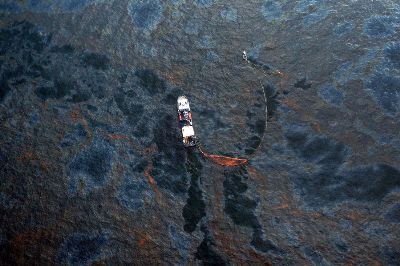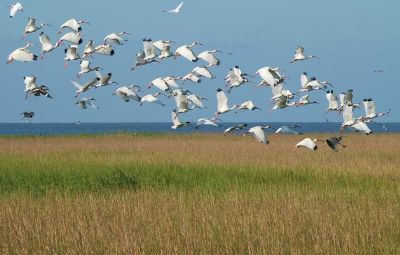by Larry
March, 2016Good, Bad, and Ugly: BP Oil Spill Nearly 6 Years Later
BP, when the balance of pending suits against it are settled, may have spent nearly $70 billion to rectify legal cases against the company for this one tragedy. Some of that money has begun to reach the states most affected, LA, MS, and AL. They are variously ready to put it to use. LA is taking the lead, dedicating large amounts to building up barriers to help protect against inland flooding indirectly caused by the spill-related loss of vast amounts of vegetation in areas that previously would block the worst of high seawater inflow from hurricanes. The other two states have yet to take advantage of the funds, lack "shovel-ready" plans for how to use them, and are embroiled in disputes about priorities. Billions may never be spent for Gulf restoration but instead could be earmarked for pet political projects. For BP, the financial leakage is likely to last for years to come as it struggles to combat further large legal assessments and to come up with the money to pay them while corporate revenues are low thanks to a meager price of oil compared with a few years previously. BP probably will survive, yet could be relatively unprofitable for quite awhile. Almost six years beyond the explosion and spill, though, it is the current slump in the energy sector rather than worries about potential future crises that is causing a big slump in the number of deepwater oil well starts. The effects of the catastrophe on the Gulf of Mexico environment and coastal economies (considering, for example, the tourism, fishing, and seafood industries alone) are almost certain to be longer and more costly than those anticipated for the company found most responsible for it. Yet, close to six years on, there is good news unfolding:
Five or six years are hardly enough time since the spill to know the overall impact. Doubtless there are implications as yet not considered or adequately measured. Yet, the resilience of nature has also been surprisingly strong in the face of such a significant assault. Thousands of photos have been published from the area in the aftermath of the April, 2010, spill. They were almost exclusively among the worst appearing images one might expect to see apart from the horrors of warfare. Yet there have now as well been inspiring pictures to come out of the region, ones that may symbolize nature's capacity, akin to our own, for second chances. |

